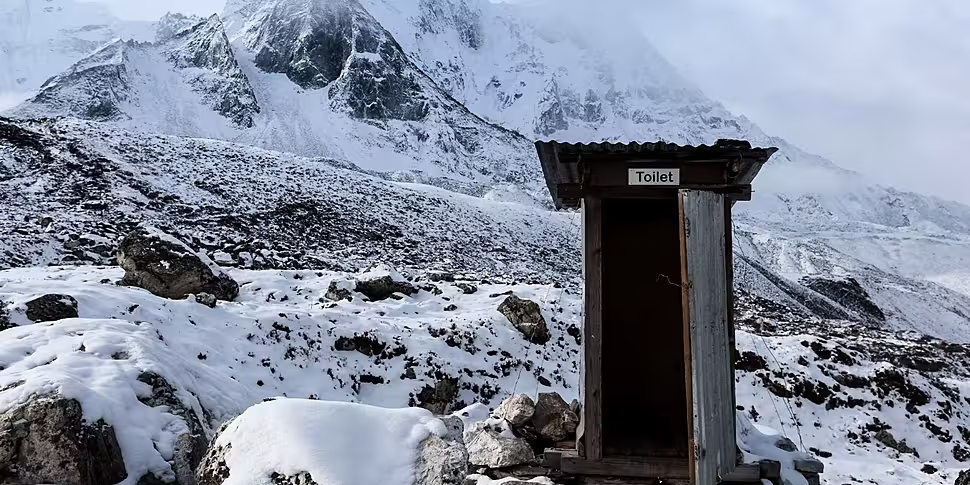Those hoping to take on Mount Everest are being urged by Nepalese authorities to bring their faeces home with them.
Under new protocols, climbers will now be given bags at base camp to use for their waste en route to the summit and are asked to return them on their way back through the camp.
The move hopes to reduce people leaving rubbish behind them on Mount Everest, where there is an estimated three tonnes of human excrement frozen between camps one and four on the way to the summit.
On The Pat Kenny Show today, One Step Forward’s Johnny Ward, a Galway man who climbed Everest last year, said using the provided bags is not pretty.
“I’m recently back from Antarctica and for people who have done big mountains in Antarctica, or South America, the bags are standard practice,” he said.
“You will have your toilet experience in the bag and it has special minerals in it to deodorise.
“But actually, because it’s so bloody cold at -30°C, or -40°C at these high altitudes, everything is just frozen solid regardless.
“It’s not great, it’s not beautiful – but it’s not as bad as you’d envisage.”
View this post on Instagram
Mr Ward said there are excellent bathroom facilities at Base Camp.
“When I did Everest ten months ago, it took me the best part of two months to climb it,” he said.
“When you’re at Base Camp, which takes two weeks, you're kind of based there as you go back up and down the mountain.
“At base camp, they do have facilities that get flown in and out – it’s almost like a functioning town.”
New protocols
Mr Ward said the new protocols are really in place for higher points on approach to the summit.
“After basecamp, you have camps one two, three, and four before the summit,” he said.
“Camp one is pretty basic, you dig a hole. Camp two is a larger camp where all the different expeditions congregate again and that has latrines.
“You are kind of okay up to that point, it’s only really camp three and four – your summit push.
“You only go onto those camps when making a summit push, it would only be for two or three days.”
View this post on Instagram
The explorer said similar approaches to handling human waste have been taken on other peaks around the globe.
“The highest mountain in North America is Denali and they have had the same protocol over the last few decades where you could bury it or launch it down a crevasse in a glacier,” he said.
“That was all well and good until the last five or ten years when the glacier started moving due to global warming.
“It has now started to spit out what had been lost in it higher up the mountain which is why they have now mandated that whatever you bring up, you have to bring down.”
Emotional experience
Mr Ward said climbing Everest was an emotional experience for him.
“When I was on the summit of Everest I was overwhelmed by emotions and I could barely talk, I was in floods of tears," he said.
“I wasn’t expecting it to be like that at all but this is the stuff you hear about as a kid and all of a sudden - you’re at the top
“Most people die coming down too so you might have the pride of finishing but now you have to get down the thing.”
Mount Everest is 8,849m tall and straddles the border of Nepal and China.
You can listen back here:
Main image: An outdoor toilet pictured on the Himalayan Mountain range. Image: Eugene Ga / Alamy Stock Photo









